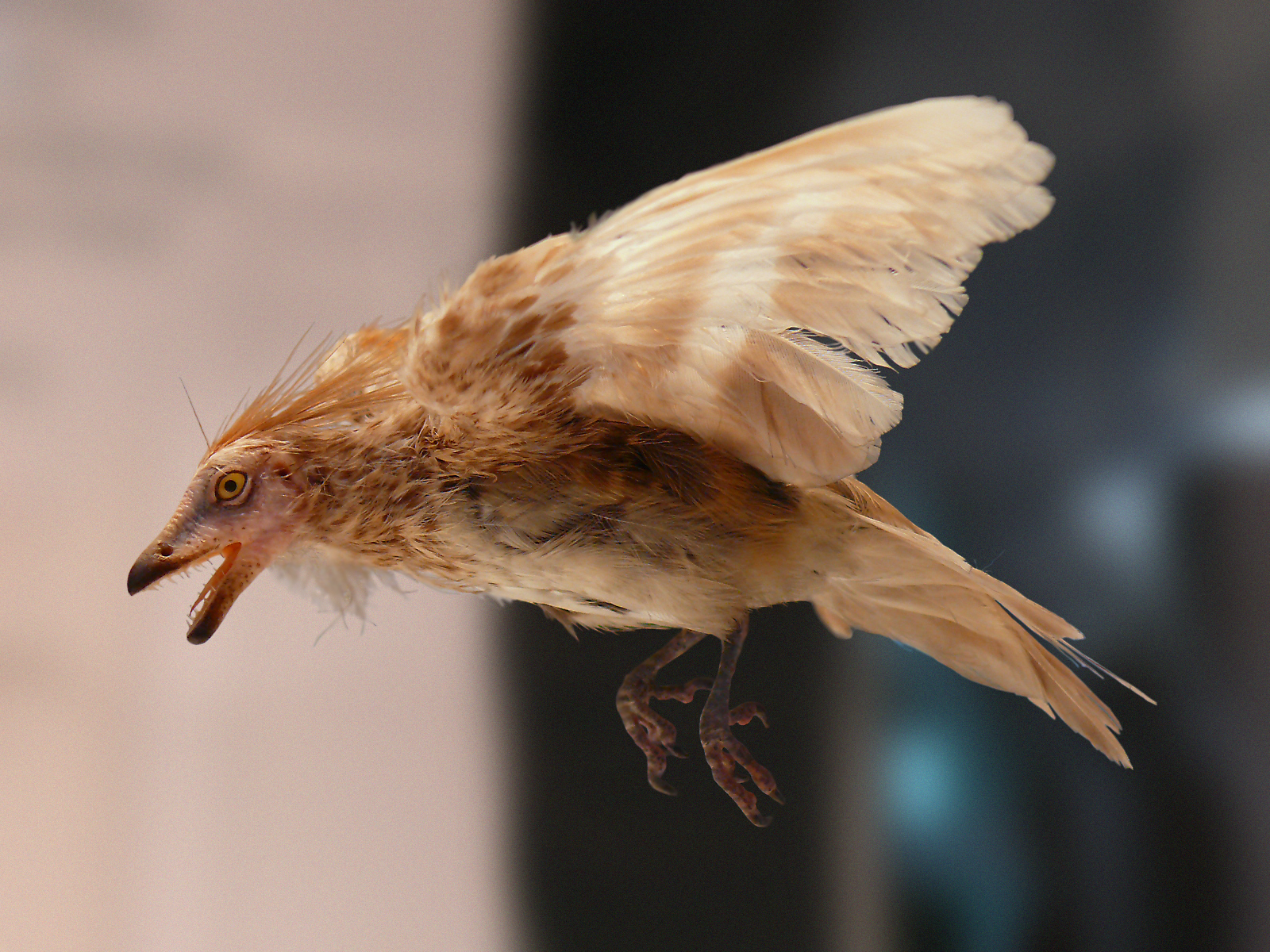- Iberomesornis
Taxobox
name = "Iberomesornis"
fossil_range =Early Cretaceous

image_width = 200px
image_caption = Reconstruction of "Iberomesornis" (Museo Nacional de Ciencias Naturales, Madrid)
regnum =Animal ia
phylum = Chordata
classis = Aves
subclassis =Enantiornithes
ordo =Iberomesornithiformes (disputed)
familia =Iberomesornithidae
genus = "Iberomesornis"
genus_authority = Sanz & J. Bonaparte,1992
species = "I. romerali"
binomial = "Iberomesornis romerali"
binomial_authority = Sanz & J. Bonaparte,1992 "Iberomesornis" ("Spanish intermediate bird") is a
monotypic genus of enantiornithinebird . In 1985 it was discovered in the EarlyCretaceous La Huérgina Formation atLas Hoyas ,Cuenca (province) ,Spain . "Iberomesornis" lived during theHauterivian andBarremian roughly 137-121 million years ago. The Huérgina Formation was once a forest surrounding a lake. "Iberomesornis romerali" was more advanced physically than "Archaeopteryx ". Most other birds from this time (around 135 million years ago) have reptilian characteristics, such as a long tail. Yet the vertebrate column of "Iberomesornis" ended in apygostyle : a splint of bone made of fused tail vertabrae that supports the tail feathers. Its wings still sported claws, but the thumb claw was reduced. Its ribcage was not strengthened byuncinate process es. "Iberomesornis" was quite small - growing to a wingspan of 10-15 centimeters and weighing 2 ounces. Overall it was no bigger than a large modernsparrow , but it was an accomplished flyer, and probably hunted insects and small animals, plucking them out of the air or from the ground. It may have preferred to live near to lakes, catching insects from the water's surface. Despite being able to perform many aerial feats, such as turning and swooping at speed, it probably couldn't manoeuvre at slow speeds. When resting, it used its long, clawed feet to perch on branches. It is unlikely to have been able to sing, although it could probably have made basic squawking noises.Since the skull is not known intact, its diet remains a subject of guesswork. Since the discovery of "Iberomesornis", many more
enanitiornithine fossils have come to light in the quarries of Liaoning provice, China. Well preserved specimens of Chinese species such asSinornis andConfuciusornis have permitted scientists to understand the birds' early fossil history.Popular Culture
They appeared in the
BBC series "Walking with Dinosaurs ", where they were depicted as having bright blue feathers.References
* Haines, Tim & Chambers, Paul. (2006): The Complete Guide to Prehistoric Life. Canada: Firefly Books Ltd.
* Sanz, J. L. & Bonaparte, José F. (1992): A New Order of Birds (Class Aves) from the Lower Cretaceous of Spain. "In": Jonathan J. Becker (ed.): Papers in Avian Paleontology Honoring Pierce Brodkorb. "Natural History Museum of Los Angeles County Contributions in Science" 36: 38-49.
Wikimedia Foundation. 2010.
